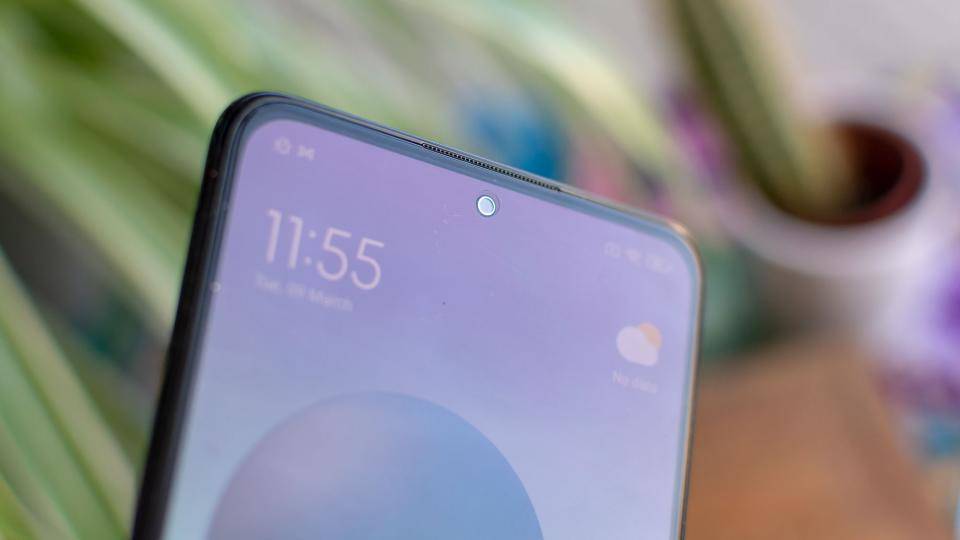It’s pretty clear that with the Redmi Note 10 Pro, Xiaomi wants that big chunk of the Western market that Huawei ceded when the Chinese giants lost access to Google apps . Written proudly on the Redmi Note 10 Pro’s box, just under the phone’s name, is the phrase “with easy access to the Google apps you use the most”. Ouch, Xiaomi, ouch.
Slight digs at the opposition’s troubles aside, the Redmi Note 10 Pro is a touch confusing. It’s not a suspiciously cheap version of the Xiaomi Mi Note 10 , though it does inherit the £459 handset’s 108MP camera. The key difference is Redmi (entry-level) vs Mi (flagship) – though why Xiaomi kept the rest of the name the same is a mystery to me. It doesn’t really matter. Both phones are great, and the Redmi Note 10 Pro is certainly one of the best handsets you can get in the increasingly competitive sub-£300 bracket.


Xiaomi Redmi Note 10 Pro review: What you need to know
It’s an aggressive pitch for the mid-range market from Xiaomi, with the Qualcomm Snapdragon 732G processor paired with 6GB of RAM and a 120Hz screen which, interestingly, is exactly the same specs as another Xiaomi budget favourite, the Poco X3 NFC .

Xiaomi Redmi Note 10 Pro review: Price and competition
In the UK, the Xiaomi Redmi Note 10 Pro starts at £249 . If you double the storage to 128GB, you're looking at an extra £20 (£269) . That puts it up against some very good handsets, most notably the mid-range champion, Google’s Pixel 4a , at £350. Alternatively, there are a couple of 5G options such as the awkwardly named Moto G 5G Plus and Realme X50 5G , both of which sell for £299. The discount elephant in the room is Xiaomi’s own Poco X3 NFC , which sells for £199, and it’s also worth looking into the Moto G9 Plus , which started life at £260 but now sells at around the £200 mark.
Xiaomi Redmi Note 10 Pro review: Design
The Xiaomi Redmi Note 10 Pro gets off to a good start in terms of design. The front is dominated by the 6.56in display, with a thin bezel running all the way around. While the bottom edge is slightly wider, it’s barely noticeable and doesn’t appear as an obvious “chin”, as is often the case with budget handsets. There’s no notch, either: instead, a pinhole camera sits in the middle of the screen a milimetre from the top border.
Xiaomi Redmi Note 10 Pro review: Screen
On paper, the Xiaomi Redmi Note 10 Pro really pushes the definition of mid-range with its screen. The 6.56in panel uses AMOLED technology (most phones in this bracket go with cheaper IPS) and it has a refresh rate of 120Hz, which makes for smoother operation and theoretically opens the door to 120fps performance in games.
Xiaomi Redmi Note 10 Pro review: Performance
On the subject of performance, this isn’t something we’ve been able to test in our normal way, unfortunately. As is often the case with pre-release phones, our usual testing apps – GeekBench and GFXBench – don’t work, so we can’t get comparable figures. Fortunately, the Xiaomi Poco X3 NFC has exactly the same core specifications, so we can assume that performance will be near identical. Here’s how it shapes up compared to other phones in and around the same price point:
As you can see, at this price point it’s all much of a muchness – though it is notable that the Google Pixel 4a, our mid-range darling, slips a little behind on the multi-core performance. It’s probably not the kind of difference you’d notice in day-to-day use, but it’s worth highlighting given it costs £50 more than the Moto G 5G Plus and £100 more than the Moto G9 Plus. The Poco X3 NFC is the real star of the show here, though, given it sells for £200 and sometimes goes even cheaper in flash sales.
The GFXBench charts, with our surrogate Poco X3 NFC playing the part of the Redmi Note 10 Pro, tell a similar story. The yellow lines are the ones to pay attention to here, as different resolutions make red line comparisons potentially misleading. Here, the Moto G 5G pulls well ahead, and although it’s not included (once again, the tests failed), it has similar internals to the £299 Realme X50 5G. Notably, all handsets beat the Pixel 4a on 3D performance, even if it’s not by a massive amount.
That said, anybody saying over 17 hours of battery life is a bad result needs their head examined, frankly.
Xiaomi Redmi Note 10 Pro review: Camera
Along with the high-spec screen, the camera array also sets the Xiaomi Redmi Note 10 Pro aside from its rivals. A 108MP camera is unheard of at this price, and pretty rare all round. For comparison’s sake, we’ve seen such high megapixel counts in the Samsung Galaxy S20 Ultra , S21 Ultra and Note 20 Ultra (all £1,000+ at launch), as well as Xiaomi’s own Mi Note 10 which sells for £459. However you paint it, squeezing this component into a sub-£300 handset is a triumph.
But do you really need to use the full 108MP resolution, when each picture weighs in at 16MB+? Here’s a shot using the default 4:3 12MP setting, and as you can see the picture quality is still excellent in well-lit conditions.
Crucially, when compared to a 108MP shot taken at the same time, there’s not that big a difference in quality, even when zoomed in.
At dusk in my garden – dark enough for nearby streetlights to have turned on, but not dark enough to need flash – the Xiaomi once again performed superbly, with punchy images, plenty of detail and very little noise.
You have to zoom in pretty close to begin to see some light smearing, and even then it’s not hugely pronounced.
The front-facing camera is also very good and takes the most flattering selfies I’ve seen in a while, feeling less like a mug shot than my recent efforts. The default setting (middle) has some light beautification enabled, but you can see what it’s like turned off (left) and maxed out (right) if you play around with the settings.
Video performance is solid, if not spectacular. It only records footage at 1080p, with no option to change that to boost the frame rate, which remains locked at 30fps. It does, however, have optical image stablisation, and it stayed solid no matter how much I shook the camera.
Xiaomi Redmi Note 10 Pro review: Verdict
I’m having a hard time thinking of any serious drawbacks to the Xiaomi Redmi Note 10 Pro, unless you have an aversion to the company’s cartoony MIUI Android skin. Yes, we don’t have a UK price yet, but assuming it’s under £300 – as it should be given the US RRP is $279 – then it’s a fantastic pick with decent performance, an incredible screen and superb photographic abilities.
If you’re concerned about the lack of 5G, you may fancy the Motorola Moto G 5G Plus for around the same price , and it does offer slightly better in gaming performance to boot – albeit with a cheaper feeling build, and “just” a 90Hz screen. If 5G isn’t a necessity, however, then the Xiaomi Redmi Note 10 Pro is definitely the phone for you.